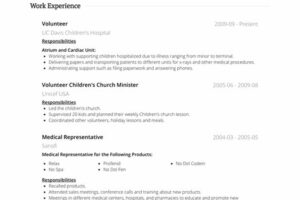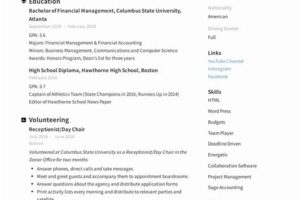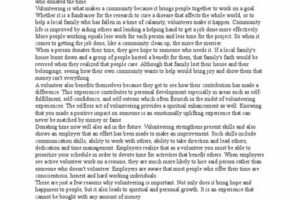Table of Contents
Discover practical tips on how to volunteer when you have a full-time job. Find ways to balance your work commitments with giving back to your community. Learn about flexible volunteering opportunities, time management strategies, and how to make a positive impact while maintaining a busy work-life schedule.
Volunteering is a noble act that allows individuals to make a positive impact on their communities and the lives of others. However, finding the time to volunteer can be a challenge, especially for those who work full time. Juggling professional responsibilities with personal commitments often leaves little room for extracurricular activities. Nevertheless, there are several strategies that can help busy professionals incorporate volunteering into their already packed schedules. By utilizing effective time management techniques and seeking out flexible volunteer opportunities, it is possible to make a difference in the world, even while working full time.
Introduction
Volunteering is a fulfilling way to give back to your community and make a positive impact on the lives of others. However, finding the time to volunteer can be challenging, especially when you have a full-time job. Balancing your work responsibilities with your desire to contribute can seem like an impossible task. But fear not! With some careful planning and organization, you can successfully volunteer even with a busy work schedule.
1. Assess Your Skills and Interests
Before embarking on your volunteering journey, take some time to reflect on your skills and interests. Think about the causes or organizations that resonate with you and align with your values. This self-assessment will help you choose a volunteer opportunity that you are passionate about and find meaningful.
2. Research Volunteer Opportunities
Once you have identified your skills and interests, begin researching volunteer opportunities that match your criteria. Look for organizations that offer flexible volunteering options or projects that can be completed remotely. Many non-profit organizations understand the constraints of working professionals and provide various ways to get involved.
3. Utilize Your Lunch Breaks
Your lunch break can be a valuable time to squeeze in some volunteering. Consider using this hour to assist local shelters, food banks, or community centers near your workplace. Whether it’s preparing meals, organizing donations, or helping with administrative tasks, your contribution during lunch breaks can make a significant difference.
4. Negotiate Flexible Work Arrangements
If possible, discuss flexible work arrangements with your employer. Some companies may offer options such as compressed workweeks, telecommuting, or adjusted schedules. By having more control over your work hours, you can free up time for volunteering without sacrificing your professional commitments.
5. Volunteer as a Team
Engage with your colleagues and suggest team-based volunteering activities. Many organizations encourage employees to participate in group volunteer projects. This not only strengthens the bonds within your team but also allows you to contribute collectively towards a cause you all care about.
6. Weekends: Your Volunteering Haven
While weekends may be your precious days off, they can also be the perfect opportunity to dedicate substantial time to volunteer work. Look for weekend-specific volunteer programs or events that align with your interests. By planning in advance, you can make the most of your weekends while making a positive impact.
7. Virtual Volunteering
In an increasingly digital world, virtual volunteering has become a popular option. Many organizations offer remote opportunities that can be done from the comfort of your own home. Whether it’s offering virtual tutoring sessions, assisting with social media campaigns, or providing online support, virtual volunteering allows you to contribute on your own time.
8. Volunteer Vacation
If you have accumulated vacation time, consider using it for a volunteer vacation. These trips combine travel and volunteering, providing a unique opportunity to explore new places while giving back to local communities. Many organizations offer structured volunteer vacations that cater to different causes and interests.
9. Don’t Overcommit
While enthusiasm for volunteering is admirable, it’s important not to overcommit yourself. Be realistic about the time you can dedicate and choose volunteer opportunities accordingly. It’s better to make a consistent and manageable contribution rather than spreading yourself too thin and potentially burning out.
10. Celebrate Your Impact
Lastly, celebrate the impact you are making through your volunteering efforts. Remember that even small contributions can create significant change. By finding the balance between your professional commitments and volunteering, you are actively contributing to the betterment of society.
In conclusion, volunteering while working full time is indeed possible. By assessing your skills, researching opportunities, utilizing lunch breaks, negotiating flexible arrangements, volunteering as a team, dedicating weekends, exploring virtual options, considering volunteer vacations, managing commitments, and celebrating your impact, you can successfully incorporate volunteering into your busy schedule. So, go out there and make a difference!
Finding Flexible Volunteer Opportunities:
One way to volunteer when you work full time is to search for flexible volunteer opportunities. Look for organizations that offer evening or weekend shifts, allowing you to contribute your time outside of your regular work hours. You can also explore virtual volunteering options, which provide the flexibility to assist organizations remotely at a time that suits your schedule.
Identifying Your Skills and Interests:
To make the most of your limited time, it’s essential to identify your skills and interests before selecting a volunteer opportunity. This way, you can focus on activities that align with your expertise and passion, maximizing your impact. Consider your professional skills, such as project management or communication, and prioritize volunteer roles that can leverage these talents.
Setting Boundaries and Prioritizing:
When balancing a full-time job and volunteering, it’s crucial to set boundaries and prioritize your commitments. Assess your workload and determine how much time you can realistically dedicate to volunteering each week or month. Communicate these limits to the organization you choose, ensuring they understand your availability and can assign you tasks accordingly.
Utilizing Employer-Supported Volunteering Programs:
Many companies encourage their employees to volunteer by offering paid time off or organizing corporate volunteering events. Research if your employer has any volunteering programs in place and take advantage of these opportunities. By utilizing such programs, you can spend your work hours giving back to your community, creating a win-win situation for both you and your employer.
Leveraging Lunch Breaks and Vacation Days:
If finding time for regular volunteering commitments is challenging, consider using your lunch breaks or vacation days to engage in shorter volunteer activities. Look for opportunities where you can contribute in a few hours or engage in events, such as fundraisers or community clean-ups, that take place during weekends. Making use of these smaller time slots can still make a significant impact.
Organizing Volunteer Events at Work:
Take the initiative and organize volunteer events at your workplace. Collaborate with colleagues who share similar interests and propose ideas for community service initiatives that can be carried out during office hours. This way, you can engage in meaningful volunteer work without having to sacrifice additional personal time outside of work.
Supporting Causes Online:
If you are unable to commit to specific volunteering hours due to your demanding work schedule, you can still contribute by supporting causes online. Share information about organizations and their initiatives on social media platforms, donate to relevant campaigns, or utilize your professional skills remotely by offering pro bono services to non-profit organizations.
Practicing Time Management and Self-Care:
When juggling a full-time job and volunteering, time management becomes critical. Prioritize your tasks, create schedules or to-do lists to ensure you allocate dedicated time for both work and volunteering. Additionally, it’s crucial to practice self-care and maintain a healthy work-life-volunteer balance to prevent burnout. Remember to take breaks, practice stress reduction techniques, and have open communication with your employer, colleagues, and the organization you volunteer for to effectively manage your commitments.
Volunteering is an incredibly rewarding experience that allows individuals to give back to their communities and make a positive impact on the lives of others. However, finding the time to volunteer can be challenging, especially for those who work full-time jobs. Nonetheless, it is possible to engage in meaningful volunteer work even while juggling a demanding professional schedule. Here are some valuable insights on how to successfully volunteer when you work full time:
Assess your availability: Begin by evaluating your current work schedule and determining the amount of time you can realistically commit to volunteering. Consider your weekly workload, any potential flexibility in your working hours, and whether you can spare time during weekends or evenings.
Identify your passion: Determine the cause or organization that aligns with your interests and values. By choosing a cause that resonates with you, you will be more likely to find the time and motivation to dedicate yourself to volunteering.
Research and plan: Conduct thorough research on local volunteer opportunities related to your chosen cause. Look for organizations or initiatives that offer flexible volunteering options, such as one-time events or remote opportunities. Create a schedule or plan that outlines how you will allocate your time to volunteering.
Communicate with your employer: Approach your supervisor or HR department to discuss your interest in volunteering and explore any potential avenues for support. Some companies may offer employee volunteer programs or flexible work arrangements that can accommodate volunteering commitments.
Utilize your skills: Identify how your professional skills can be utilized in the volunteer work you choose. This will not only enhance the impact you make but also provide an opportunity for personal growth and development.
Volunteer during lunch breaks or after work: If your schedule allows, consider using your lunch breaks or dedicating some time after work to engage in volunteer activities. Many organizations offer shorter volunteering shifts or remote opportunities that can be done outside of regular working hours.
Find virtual volunteering options: With the rise of technology, numerous virtual volunteering opportunities have emerged. These allow individuals to contribute remotely, fitting around their work schedules. Look for online mentoring, writing, or research projects that can be done in your free time.
Join volunteer networks and events: Engage with local volunteer networks or sign up for community events that take place during weekends or evenings. This way, you can maximize your impact by participating in collective efforts while also expanding your network of like-minded individuals.
Prioritize self-care: While volunteering is important, it is crucial to prioritize your own well-being. Ensure you have a healthy work-life balance and avoid overcommitting yourself. Remember that small contributions can still make a significant difference.
By following these guidelines, you can successfully incorporate volunteer work into your full-time professional life. Remember that even if you have limited time available, every effort counts and can contribute to building a better and more compassionate society.
Thank you for taking the time to read our blog on how to volunteer when you work full time. We understand that finding the balance between work and volunteering can be challenging, but it is not impossible. With a little bit of planning and commitment, you can make a difference in your community while still fulfilling your professional responsibilities. Let us summarize the key points we discussed in this article.
In the first paragraph, we emphasized the importance of identifying your passion and aligning your volunteer work with your interests. By choosing a cause that resonates with you, you will feel more motivated and fulfilled in your efforts. Additionally, we highlighted the significance of setting realistic goals and managing your time effectively. It is crucial to assess your availability realistically and commit to a schedule that works for both your professional and personal life. Remember, even small commitments can make a significant impact.
In the second paragraph, we discussed the various ways you can incorporate volunteering into your busy work schedule. We suggested exploring flexible or remote volunteering opportunities that allow you to contribute from anywhere at any time. Additionally, we encouraged you to leverage your skills and expertise by offering pro bono services or joining skill-based volunteering programs. These options not only allow you to make a meaningful impact but also provide opportunities for professional growth and development.
In the final paragraph, we stressed the importance of self-care and maintaining a healthy work-life balance. It is essential to avoid overcommitting yourself and ensure that you have enough time for rest and relaxation. Remember that volunteering should bring you joy and fulfillment, not overwhelm you. Lastly, we encouraged you to reach out to local volunteer organizations or your employer to inquire about any company-sponsored volunteering initiatives. Many companies offer paid volunteer leave or organize group volunteering activities, which can make it easier for you to volunteer without compromising your work commitments.
We hope that this article has provided you with valuable insights and practical tips on how to volunteer when you work full time. Remember that every effort, no matter how small, can make a difference in the lives of others. By incorporating volunteering into your routine, you not only contribute to your community but also enhance your personal and professional growth. So, go ahead and make a positive impact!
Thank you once again for visiting our blog. We appreciate your readership and hope to see you back soon for more informative and inspiring content.
.
People Also Ask – How To Volunteer When You Work Full Time:
Can I volunteer while working full time?
Yes, it is possible to volunteer even if you work full time. Many organizations offer flexible volunteering opportunities that can accommodate your work schedule.
How can I find volunteer opportunities that fit my work schedule?
You can start by researching local nonprofit organizations or community centers that align with causes you are passionate about. Contact them directly to inquire about volunteer opportunities and discuss your availability. Additionally, there are online platforms dedicated to connecting volunteers with organizations, allowing you to search for opportunities based on your location and availability.
What are some flexible volunteer options for working professionals?
There are several flexible volunteer options available for working professionals. Here are a few examples:
- Weekend volunteering: Look for opportunities where you can dedicate your weekends to volunteering.
- Evening volunteering: Find organizations that offer volunteering opportunities in the evenings, allowing you to contribute after work hours.
- Virtual volunteering: Explore virtual volunteering options that can be done remotely, such as online mentoring, social media management, or website development.
- Short-term projects: Look for projects that have a defined timeline, allowing you to contribute during specific periods when you have time off from work, such as during holidays or vacations.
How can I manage my time between work and volunteering?
To effectively manage your time between work and volunteering, consider the following tips:
- Prioritize: Determine which volunteer activities align with your interests and values, and choose those that you can commit to without compromising your work responsibilities.
- Create a schedule: Plan your week in advance, allocating specific time slots for work and volunteering. This will help you stay organized and ensure you dedicate enough time to both.
- Communicate with your employer: Inform your employer about your volunteering commitments and discuss any potential conflicts that may arise. Some employers may offer flexibility or even support your volunteer efforts through company-sponsored initiatives.
- Take care of yourself: It’s important to find a balance between work, volunteering, and personal life. Make sure to prioritize self-care and avoid overcommitting yourself, as burnout can hinder your ability to contribute effectively in both areas.
What are the benefits of volunteering while working full time?
Volunteering while working full time can provide numerous benefits, including:
- Satisfaction of giving back to the community and making a positive impact on others’ lives.
- Opportunities to develop new skills or enhance existing ones, which can be beneficial for career growth.
- Expanded network and connections within your community or industry.
- Increased sense of fulfillment and overall happiness.
- Improved work-life balance through the pursuit of meaningful activities outside of work.






